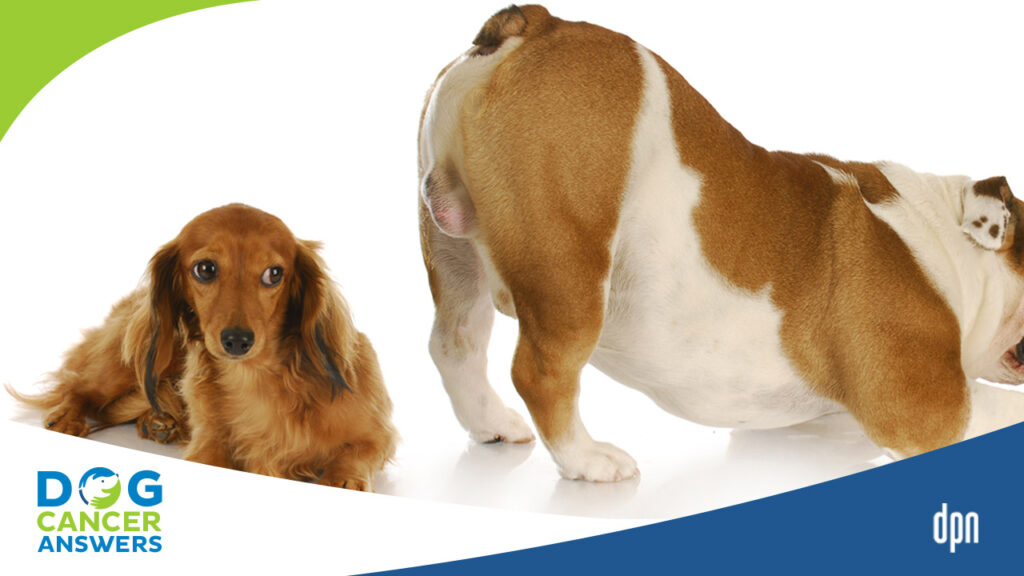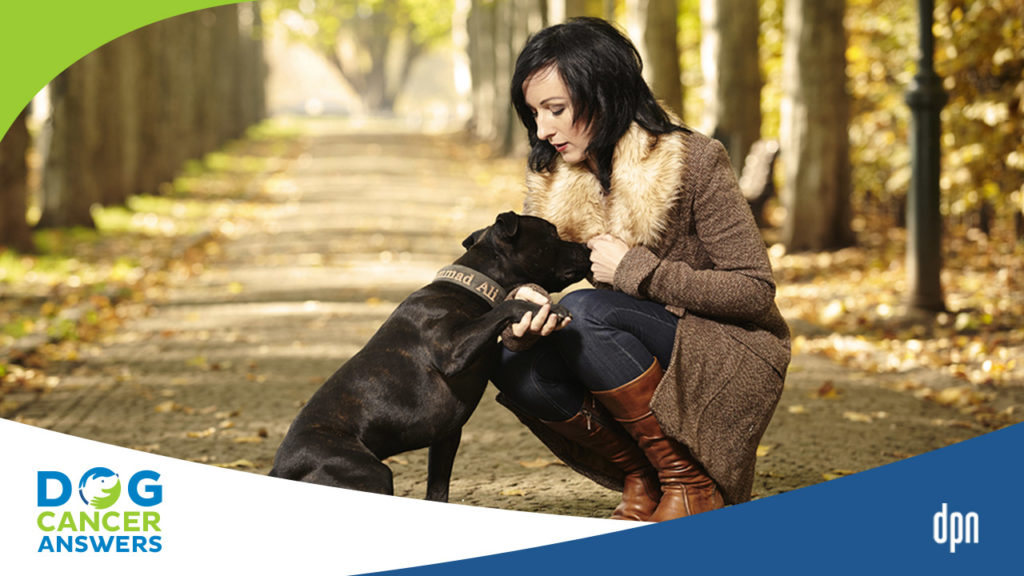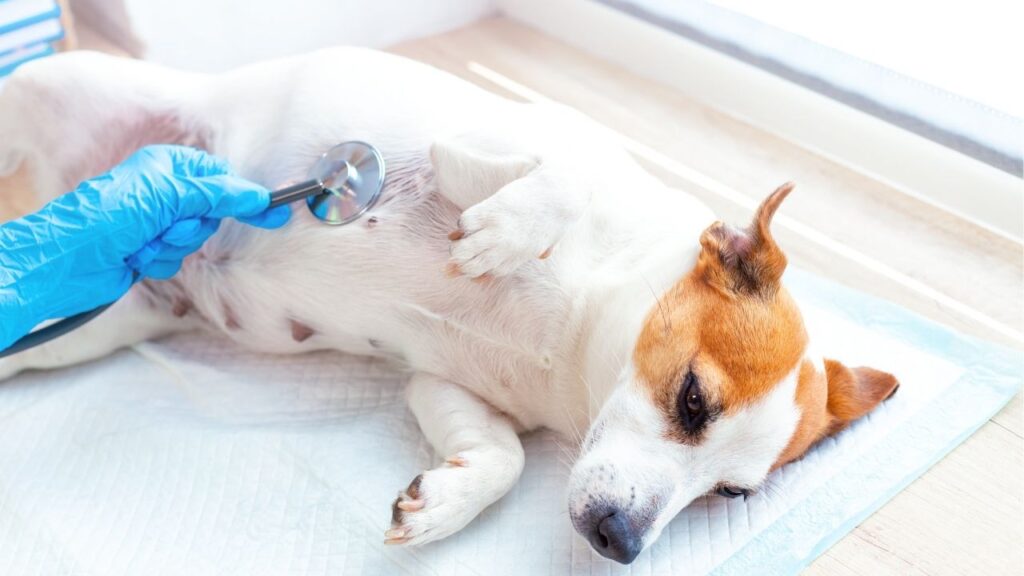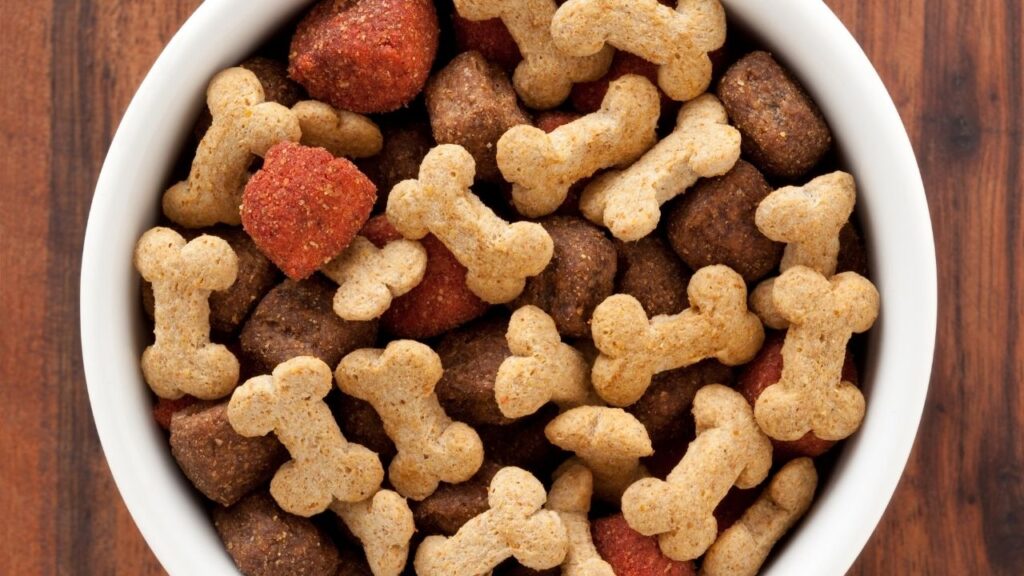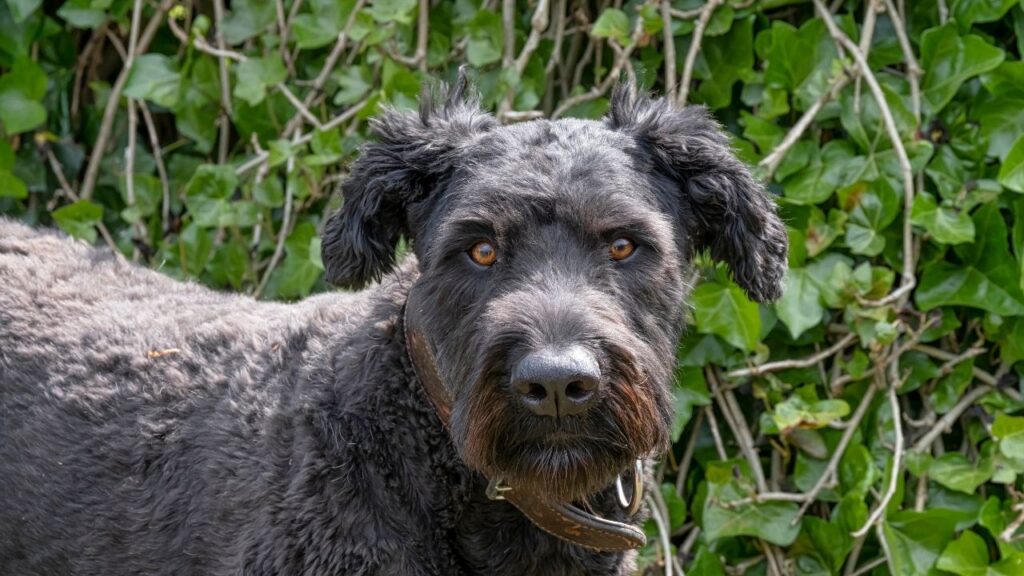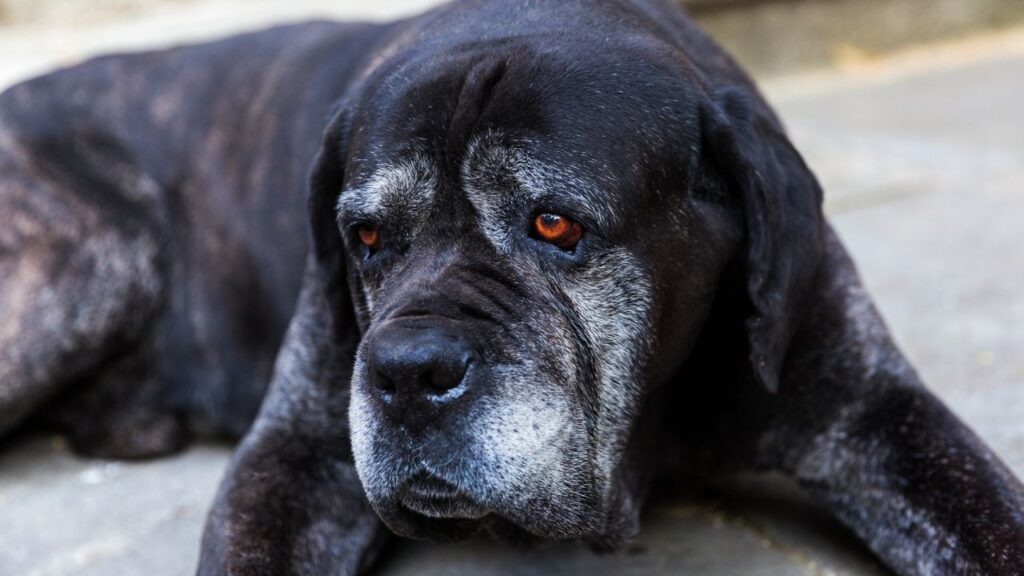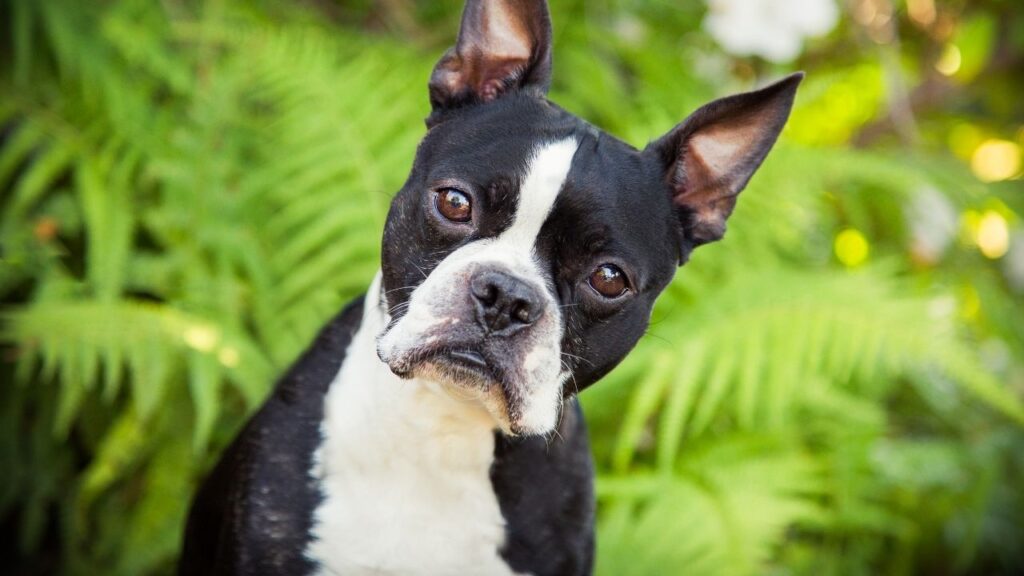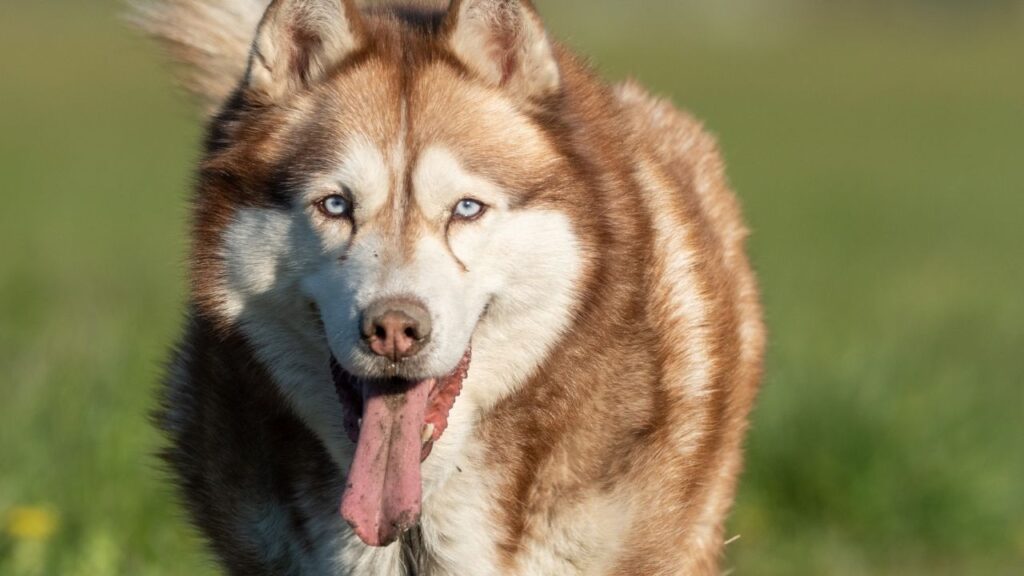Testicular cancer is slow to spread and can be easily treated with low-risk surgery, giving it an excellent prognosis.
Key Takeaways
- The prognosis for testicular cancer is excellent because it grows slowly has a slow rate of metastasis, or spreading.
- Testicular cancer is highly treatable in dogs. Often, just removing the testes is enough of a treatment.
- Unless your dog has a severe and not common form of testicular cancer that causes anemia, your dog is not likely to die of this cancer if you treat it.
- Testicular cancer is more common in intact (unneutered) older dogs. The average age of diagnosis is ten years.
- Testicular cancer is not necessarily painful, although it can be, and if your dog flinches when that area is palpated, that is a sign of pain.
- Some breeds like Poodles, Cocker Spaniels, Boxers, German Shepherds, and Pinschers have a higher rate of testicular tumors.
- Testicular cancer does not spread fast, with metastasis rates reported at being between 6% and 20% of dogs.
About Testicular Cancer in Dogs
Testicular cancer occurs in the testes and scrotum of male dogs who are either intact (not been neutered) or have had testicular tumors spread beyond the testes before their removal.
Testicular tumors are slow-growing and can be easily removed if confined to the genitals. In rare cases, this cancer can be fatal if left untreated.
Three main categories of testicular tumors are derived from two primary cell types: germ cells (which produce sperm) and sex cord-stromal cells (which make up supportive connective tissues in the testes).
- Seminoma: This testicular tumor is derived from the germ cells that normally produce sperm in the testes. There are two types of seminomas: classical and spermatocytic.
- Sertoli Cell Tumor: This type of testicular tumor is derived from the sex cord cells and can produce estrogen, leading to a condition called hyperestrogenism. Hyperestrogenism causes signs of feminization and may eventually negatively impact bone marrow.
- Leydig Cell Tumor: This type of testicular tumor is also called an interstitial cell tumor. It’s also derived from the stromal cells. These tumors are typically small and benign but can produce excess testosterone.
These three main types may occur in tandem and can be present in either one or both testicles. For example, one study investigating 190 dogs with testicular tumors found that 30 had more than one type of tumor present, and 10 had tumors in both testes.15
Other tumor types, such as lipoma, fibroma, and hemangioma, may also occur in the testicles, but these are rare.4
How Many Dogs Get Testicular Cancer, and What Types Do They Get?
Testicular cancer is more common in dogs than in any other species, including humans.7 And the disease may be on the rise.
- One study published in 1962 found testicular tumors in 16% of the intact male dogs examined, while a 2008 study found testicular tumors in 27% of intact dogs examined.9
- However, one study that investigated 1,900 intact male dogs from 2000 to 2018 found testicular tumors in only 11% of cases.15
The ratio of types of testicular tumors, as reported in the literature, are fairly consistent.
- Of 345 testicular tumors studied in one research paper, 33.9% were seminomas, 26.4% were Sertoli cell tumors, and 33% were Leydig cell tumors.16
- Of 190 cases in a 2020 study, 40% were seminomas, 27.7% were Sertoli cell tumors, and 29.1% were Leydig cell tumors.15
That said, the likelihood of a testicular tumor in dogs being a seminoma increases with age and breed. 16,19
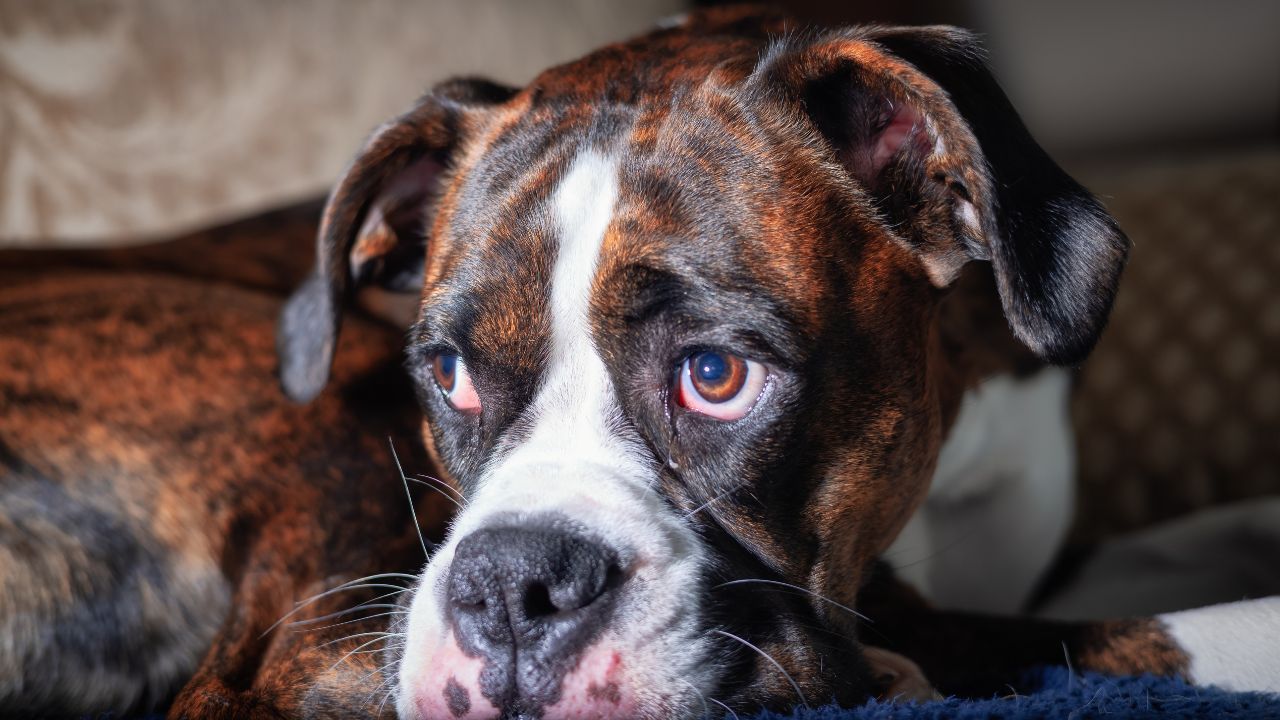 What Causes Testicular Cancer in Dogs?
What Causes Testicular Cancer in Dogs?
There is no known direct cause of testicular cancer. Like other cancers, it is multifactorial, meaning, a combination of environmental and genetic factors likely causes it.3
Risk Factors for Testicular Cancer
There are certain factors heavily correlated with the presence of testicular cancer:
- Cryptorchidism (undescended testicles)
- Inguinal hernias
- Toxin exposure
- Increased age
- Size
- Breed predispositions
Cryptorchidism and Testicular Cancer in Dogs
Dogs with cryptorchidism, a condition in which one or both testes fail to descend, have a 13.6 times higher risk of developing testicular tumors than dogs without.11
Veterinary oncologist Dr. Trina Hazzah advises a DOG CANCER ANSWERS listener that yes, testicles not dropping increases the risk of testicular cancer.
Inguinal Hernias and Testicular Cancer in Dogs
Dogs with inguinal hernias may also be at increased risk. One study found them at 4.7 times higher risk of developing testicular tumors, 11 but another study working with 190 dogs diagnosed with testicular tumors only identified 3 with inguinal hernias.15
Toxin Exposure and Testicular Cancer in Dogs
Exposure to toxins is also linked to testicular cancer.
For example, United States military dogs that served in the Vietnam War were reported to have an 80% higher occurrence of testicular tumors than United States military dogs who remained on U.S. soil.
During wartime in Vietnam, these dogs would have been exposed to infectious agents, chemical pesticides, and tetracycline to control parasitic diseases, which may have contributed to tumor development and testicular dysfunction.12
Aging and Testicular Cancer in Dogs
As with most cancers, your dog’s age can play an important role in the likelihood of development. Generally, the average age at the time of diagnosis is ten years,16 though tumors that arise from Sertoli cells are more likely to occur at a younger average age of 8.6 years.
That said, testicular tumors have been identified from as young as ten months to as old as 18 years.16
Breeds at Risk for Testicular Cancer
Studies have identified particular breeds that appear to have an increased rate of having testicular tumors. The five most commonly affected breeds in one study were Poodles, Cocker Spaniels, Boxers, German Shepherds, and Pinschers.15
Some breeds may also be partial to a particular type of testicular tumor. One study that examined 345 testicular tumors found that Shetland Sheepdogs and Border Collies were most likely to be diagnosed with Sertoli cell tumors. In contrast, all testicular tumors found in Norwegian Elkhounds were seminomas.16 Similarly, research investigating 45 testicular tumors removed from Norwegian Elkhounds found all 45 to be classical seminoma.19
Size Affects Testicular Cancer Risk
Lastly, the size of your dog may either minimize or maximize risk. Medium dogs weighing 11 to 20 kg (about 25 to 44 lbs) accounted for only 18% of dogs with testicular tumors studied, while smaller and larger dogs had a higher risk.15
Signs of Testicular Cancer
Although testicular tumors typically only affect the testes and rarely spread to other areas, several signs may indicate abnormal growth in one or both of your dog’s testicles.
- Expansive growth and marked distension (swelling) of the testicle(s)
- This is one of the most obvious and common symptoms.
- In a study examining 190 dogs with testicular tumors, this particular symptom was reported in 92 cases.15
- Increased scrotal volume
- The scrotum is the biological tissue surrounding the testes, which may become inflamed or increase in size if a tumor is present.
- The same study of 190 dogs found that increased scrotal volume was reported in 14 cases.15
- Signs of pain upon touch
- Inflammation and tumor size may cause enough discomfort in your dog that he may yelp, pull away, or show signs of aggression when the testicles are palpated.
- Out of 190 dogs, this was reported in 6 cases.15
- Increase in breast gland tissue
- This symptom is associated with Sertoli cell tumors because they produce excess estrogen.
- This excess estrogen can eventually develop into hyperestrogenism, which can cause nipple elongation and mammary enlargement.18
- Biopsy information about 11 dogs with testicular tumors identified ten that had Sertoil cell tumors present, and all 11 showed signs of hyperestrogenism.15
- Presence of skin lesions
- The skin on or near your dog’s testes or scrotum may have an abnormal appearance relative to the surrounding skin.
- In the same 11 dogs mentioned above, this symptom was reported in 7 cases.15
- Sudden infertility
- An intact male dog who is suddenly unable to successfully breed and produce offspring after previously doing so may be a sign of testicular tumors.3
- Squatting to urinate
- If your male dog has previously urinated by lifting a hind leg and starts squatting instead, this may be a sign of issues with the testes.3 This could also be due to the development of hyperestrogenism.18
- Swelling of the anus
- Leydig cell tumors may cause the area around the anus to increase in size. This is because Leydig cell tumors produce increased testosterone.4
More general symptoms that can occur include:
These symptoms are common in many cancers and other illnesses. They can signify that a testicular tumor has spread from the testes to another body area, such as other organs or lymph nodes.
Your dog may also show no signs or symptoms because these tumors are slowly growing. In these cases, these tumors are usually identified during routine veterinary checkups.
Some testicular tumor cells are also typically small and benign, like Leydig cells; therefore, no signs of abnormal growth will be apparent.3
Diagnosing Testicular Cancer
Upon physical examination, your vet may identify a tumor and order additional tests to confirm a diagnosis. These tests can include:
- Bloodwork, with a complete blood count test and a biochemistry profile
- Urinalysis
- Chest and abdominal X-rays
- Abdominal and scrotal ultrasounds
Your veterinarian may also want to do an orchiectomy (remove the testes) so that they can send the tumor mass out for histopathology. Intact males used for breeding may receive a biopsy (just taking a sample out) to rule out cysts as a cause before a larger surgery.3
If a biopsy is taken, it will be fixed to a slide and then stained so the pathologist can look at the cells with a microscope. Cells belonging to different types of testicular cancer can appear differently, helping to make a diagnosis. This is important because different tumor types behave differently, so knowing the exact cancer type will help to determine treatment strategies and prognosis.
Regardless of the diagnosis, it may be worth getting a second opinion if the particular kind of testicular tumor is important to your dog’s treatment. In a study that examined 345 testicular tumors from dogs, 22.5% of the original diagnoses regarding type were later modified following a second round of histopathological evaluation.16
Prognosis and Staging Testicular Cancer in Dogs
Generally speaking, the prognosis for testicular cancer is excellent because it has a slow metastasis rate or spreading rate.17
- Rates of metastasis have been reported from 6% to 20%.2,3
- In a long-term study on Golden Retrievers, 90.9% of those diagnosed with testicular cancer fully recovered.17
- Sertoli cell tumors and seminomas have less than a 15% chance of spreading, and Leydig cell tumors rarely spread.18
If cancer does advance, tests to stage testicular cancer may include:
- Rectal examination
- Bloodwork
- Urinalysis
- Chest radiographs (X-rays)
Advanced imaging may be required for dogs with cryptorchidism; further sampling may be necessary if any of your dog’s lymph nodes are enlarged.17,18
The positive outlook may decrease if the bone marrow is affected by testicular cancer. For example, Sertoli cell tumors can cause hyperestrogenism because they produce estrogen. This excess estrogen can deplete bone marrow and cause anemia and lethargy. It may require additional treatment and, in very rare cases, can be fatal.17,18 Similarly, if cancer has metastasized beyond the testes to the bone marrow, your dog may face complications.17,18
Is Staging Worth It?
Staging can get quite expensive, so this is an area where you can weigh pros and cons.
- The pros of staging are that you and your dog’s veterinary team will have a complete picture of your dog’s health and what parts of his body are affected by cancer. This information can give you a more accurate idea of how he might do, and might also rule in or out some treatment options.
- The cons are that it is expensive and does not always give information that will change your decision. If you have limited funds, allocating your money for treatment may be the better choice.
Treatments for Testicular Cancer
Cancer treatment in dogs does not usually set a “cure” as the goal, because we usually can’t “get it all out” with confidence.
It is a little different when it comes to testicular cancer. Often (but not always) just removing the testes using surgery is enough!
Surgery
An orchiectomy, or removal of one or both testicles, is the primary treatment for testicular cancer. It is a relatively simple procedure, and complications following surgery are uncommon.6
In severe cases or when metastasis has occurred, the focus is on improving and maintaining the quality of life while hopefully extending the dog’s life beyond what would happen if the cancer wasn’t treated.
Veterinary technician Kate Basedow explains the many way you can improve your dog's quality of life in this special episode of DOG CANCER ANSWERS.
Chemotherapy
Chemotherapy may be used if the cancer has spread beyond the testes, which is rare. If it is used, an injectable chemotherapy drug, such as cisplatin6 or carboplatin, may be used.
Radiation
Radiation can also be used in the rare case of spread.
Immunotherapy
Immunotherapy is not a common course of treatment for testicular cancer and is typically not applied to dogs in clinical settings. Some companies are studying the genetics and molecular profiles of cancers in hopes they will be able to develop therapeutics in the future.
Vaccine
There is no vaccine for dogs with testicular cancer, but one study in mice found that a therapeutic vaccine targeting inhibin-α, a protein produced by normal Sertoli and Leydig cells in the testes, protected against testicular stromal cell tumors.1
Diet
There is no evidence-based diet for treating testicular cancer in humans and no official information on a dietary protocol for dogs, specifically with testicular cancer.
However, antioxidant-rich foods (blueberries, broccoli) may help reduce inflammation, making your dog more comfortable before and after surgery.
Other general dietary guidelines can be found in our Diet section.
Supplements
Muscle-building supplements with creatine and androstenedione have been linked to testicular cancer in humans, so it may be best to avoid giving your dog supplements with these ingredients.14
Many supplements might help manage your dog’s cancer. Always consult your veterinarian before adding a supplement.
Also, only add one supplement at a time, so if your dog reacts poorly, you will know exactly which thing he didn’t tolerate.
In most cases, it is better to choose a few supplements targeting your dog’s primary needs. This will also help to keep costs down.
Integrative Therapies
There are no known integrative therapies specific to testicular cancer. However, many therapies may provide a high quality of life during and after treatment.
Cancer Research for Testicular Cancer
We will update this article with links to clinical trials as they become available.
What Does the End of Life Look Like in Testicular Cancer?
Most dogs survive this cancer, especially if an orchiectomy is performed before the cancer spreads. This can typically be done in time because testicular cancer has a slow growth rate. If your dog’s cancer hasn’t metastasized or invaded local tissues, your dog will probably pass due to some other cause.
Dogs that develop severe forms of testicular cancer typically die due to loss of integrity of their bone marrow. This can cause anemia (decreased red blood cells in the bloodstream), low platelets and bruising, and abnormalities in white blood cells.4
Prevention Strategies for Testicular Cancer in Dogs
There are many prevention strategies to reduce your dog’s risk of cancer at large, but there is substantial research backing the following three preventative strategies for preventing testicular tumors specifically:
- Neutering eliminates the threat of testicular cancer, especially for dogs with cryptorchidism. However, neutering before maturity may increase the risk of osteosarcoma, cardiac hemangiosarcoma, and prostate cancer, so it’s probably best to wait until your dog is an adult before neutering. 17
- Minimize the use of herbicides and chemical agents in your home and yard. Several chemicals have been linked to dogs with testicular cancer. If you can find alternative solutions and avoid chemicals altogether, this is recommended.13
- Keep your dog up-to-date and healthy with regular vet visits, because testicular tumors are typically discovered during routine checkups. Because it is slow growing, any mass is likely to be confined to the testicle(s), and a follow-up neutering will eliminate cancer altogether.18
The VACCS trial is ongoing, and if their cancer vaccine for dogs is successful, it may provide another prevention tool for future dogs.
- Aguilar, R., Johnson, J.M., Barrett, P., Tuohy, V.K. 2017. Vaccination with inhibin-α provides effective immunotherapy against testicular stromal cell tumors. Journal for ImmunoTherapy of Cancer 5:37. https://jitc.biomedcentral.com/articles/10.1186/s40425-017-0237-2.
- Birchard, S.J., Sherding, R.G. 2006. Saunders Manual of Small Animal Practice. 3rd Ed. Saunders. 1,888 pgs. https://vetbooks.ir/saunders-manual-of-small-animal-practice-3rd-edition/.
- BluePearl Specialists. 2022. Testicular tumors: causes, signs and treatment. Bluepearl specialty + emergency pet hospital. https://bluepearlvet.com/medical-articles-for-pet-owners/testicular-tumors-in-dogs/#:~:text=Testicular%20tumors%20are%20considered%20one,Leydig)%20cell%20tumors%20and%20seminomas. Accessed on November 5, 2022.
- Brister, J. 2019. Testicular cancer in dogs. Veterinary Partner. https://veterinarypartner.vin.com/default.aspx?pid=19239&catId=102899&id=9284643. Accessed on November 5, 2022.
- Cummings, O.W., Ulbright, T.M., Eble, J.N., Roth, L.M. 1994. Spermatocytic seminoma: an immunohistochemical study. Human Pathology 25:54-59. https://pubmed.ncbi.nlm.nih.gov/7508884/.
- Dhaliwal, R.S., Kitchell, B.E., Knight, B.L., Schmidt, B.R. 1999. Treatment of aggressive testicular tumors in four dogs. Journal of the American Animal Hospital Association 35:311-318. https://europepmc.org/article/med/10416776.
- Dow, C. 1962. Testicular tumours in the dog. Journal of Comparative Pathology and Therapeutics 72: 247-265. https://www.sciencedirect.com/science/article/abs/pii/S0368174262800289.
- Edwards, J., Cullen, J., Kennedy, P.C. 1998. Histological classification of tumors of the genital system of domestic animals. Conference Proceedings. https://www.semanticscholar.org/paper/Histological-Classification-of-Tumors-of-the-System-Edwards-Cullen/f94b286846664b031555090ad6e13bb0fb9e19ae.
- Grieco, V., Riccardi, E., Greppi, G.F., Teruzzi, F., Iermonó, V., Finazzi, M. 2008. Canine testicular tumours: a study on 232 dogs. Journal of Comparative Pathology 138:86-89. https://www.sciencedirect.com/science/article/abs/pii/S0021997507001673.
- Grieco, V., Riccardi, E., Rondena, M., Ciampi, V., Finazzi, M. 2007, Classical and spermatocytic seminoma in the dog: histochemical and immunohistochemical findings. Journal of Comparative Pathology 137:41-46. https://pubmed.ncbi.nlm.nih.gov/17629966/.
- Hayes, H.M., Pendergrass, T.W. 1976. Canine testicular tumors: Epidemiologic features of 410 dogs. International Journal of Cancer 18:482-487. https://onlinelibrary.wiley.com/doi/abs/10.1002/ijc.2910180413
- Hayes, H.M., Tarone, R.E., Casey, H.W., Huxsoll, D.L. 1990. Excess of seminomas observed in Vietnam service U.S. military working dogs. Journal of the National Cancer Institute 82:1042-1046. https://academic.oup.com/jnci/article-abstract/82/12/1042/1042295?login=false.
- Kelsey, J.L., Moore, A.S., Glickman, L. 1998. Epidemiologic studies of risk factors for cancer in pet dogs. Epidemiologic Reviews 20:204-217. https://www.researchgate.net/publication/13370592_Epidemiologic_Studies_of_Risk_Factors_for_Cancer_in_Pet_Dogs.
- Li, N., Hauser, R., Holford, T., Zhu, Y., Zhang, Y., Bassig, B.A., Honig, S., Chen, C., Boyle, P., Dai, M., Schwartz, S.M., Morey, P., Sayward, H., Hu, Z., Shen, H, Gomery, P., Zheng, T. 2015. Muscle-building supplement use and increased risk of testicular germ cell cancer in men from Connecticut and Massachusetts. Nature 112:1247-1250.
- Nascimento, H.H.L., dos Santos, A., Prante, A.L., Lamego, E.C., Tondo, L.A.S., Flores, M.M, Fighera, R.A., Kommers, G.D. Testicular tumors in 190 dogs: clinical, macroscopic and histopathological aspects. Brazilian Journal of Verterinary Research 30:525-535. https://www.scielo.br/j/pvb/a/RXCDQJzbjSbrZGYX3xY99Yf/?lang=en&format=pdf
- NØdtvedt, A., Gamlem, H., Gunnes, G., Grotmol, T., IndrebØ, A., Moe, L. 2010. Breed differences in the proportional morbidity of testicular tumours and distribution of histopathologic types in a population-based canine cancer registry. Veterinary and Comparative Oncology 4:45-54.
- Sanborn, L.J. 2007. Long-term health risks and benefits association with spay/neuter in dogs. 11 pgs. Available at: http://www.kincurranbeardedcollie.com/longtermhealtheffectsofspayneuterindogs.pdf. Accessed on November 5, 2022.
- Stoewen, D., Pinard, C. 2022. Testicular Tumors. VCA Animal Hospitals. https://vcahospitals.com/know-your-pet/testicular-tumors. Accessed on November 5, 2022.
- Thorvaldsen, T.E., NØdtvedt, A., Grotmol, T., Gunnes, G. 2012. Morphological and immunohistochemical characterization of seminomas in Norwegian dogs. 54:52. https://actavetscand.biomedcentral.com/articles/10.1186/1751-0147-54-52.
Topics
Did You Find This Helpful? Share It with Your Pack!
Use the buttons to share what you learned on social media, download a PDF, print this out, or email it to your veterinarian.
